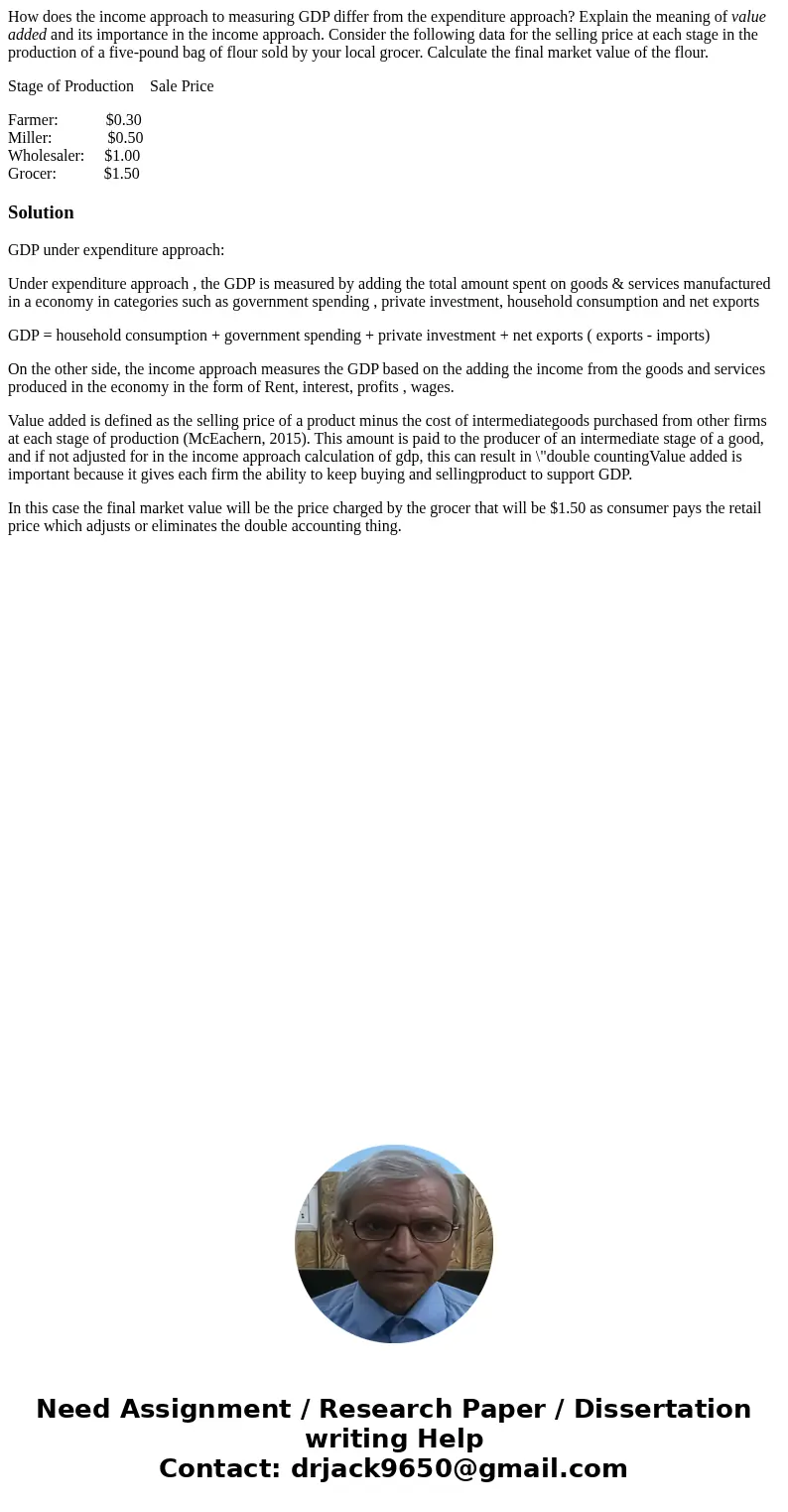How does the income approach to measuring GDP differ from th
How does the income approach to measuring GDP differ from the expenditure approach? Explain the meaning of value added and its importance in the income approach. Consider the following data for the selling price at each stage in the production of a five-pound bag of flour sold by your local grocer. Calculate the final market value of the flour.
Stage of Production Sale Price
Farmer: $0.30
Miller: $0.50
Wholesaler: $1.00
Grocer: $1.50
Solution
GDP under expenditure approach:
Under expenditure approach , the GDP is measured by adding the total amount spent on goods & services manufactured in a economy in categories such as government spending , private investment, household consumption and net exports
GDP = household consumption + government spending + private investment + net exports ( exports - imports)
On the other side, the income approach measures the GDP based on the adding the income from the goods and services produced in the economy in the form of Rent, interest, profits , wages.
Value added is defined as the selling price of a product minus the cost of intermediategoods purchased from other firms at each stage of production (McEachern, 2015). This amount is paid to the producer of an intermediate stage of a good, and if not adjusted for in the income approach calculation of gdp, this can result in \"double countingValue added is important because it gives each firm the ability to keep buying and sellingproduct to support GDP.
In this case the final market value will be the price charged by the grocer that will be $1.50 as consumer pays the retail price which adjusts or eliminates the double accounting thing.

 Homework Sourse
Homework Sourse